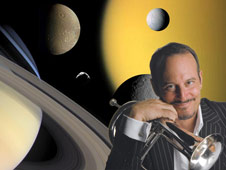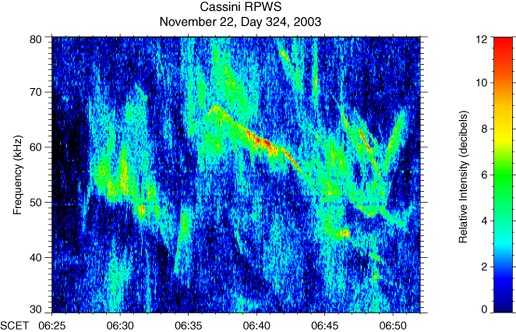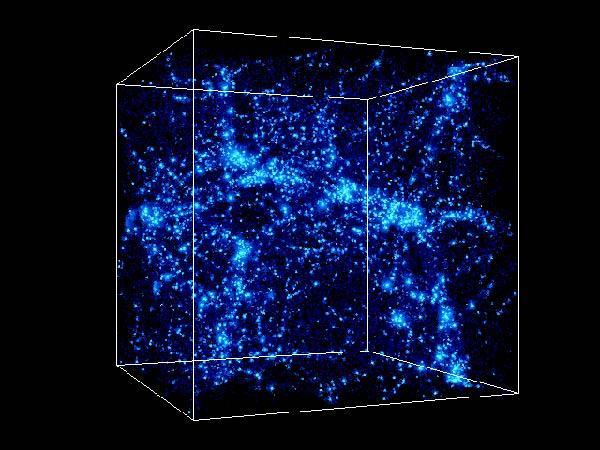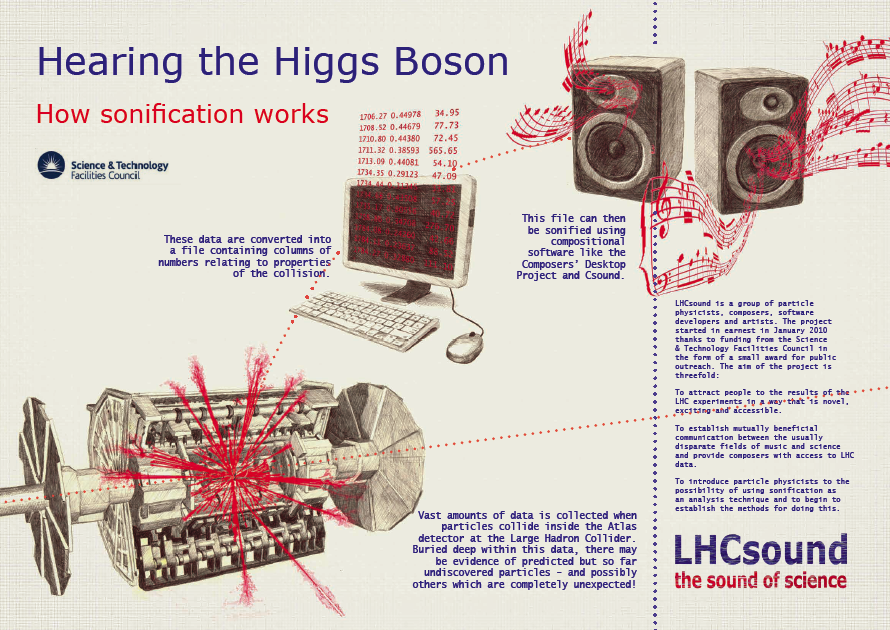An Interview With Jeff Oster
After discovering the LHC sound project last year I've been on the look out for artists who have taken these sounds and used them to make music. So recently I was very excited when I came across a track called "Particles of God" because not only did it feature these bizarre and abstract sounds but it also sounded awesome!

The man behind the track is Jeff Oster, an American trumpet/flugelhorn player whose work frequently crosses over into electronic and ambient terrain. After hearing this track I delved deeper and found that this was not the first piece Jeff had created using audio samples from scientific sources. On another track entitled “Saturn Calling” he had sampled the eerie sounds of Saturn’s auroras (as captured by the NASA Cassini spacecraft) and it won him the ‘Best New Age Song’ at the 2008 Independent Music Awards.
I decided to get in touch with Jeff to find out a little bit more about how these cosmological and subatomic soundscapes had been influencing his work...
What was the inspiration behind these tracks? (Saturn Calling & Particles of God)
"I have always been interested in the cosmos, space exploration and mankind's need to reach beyond this world. From watching the mars rovers landing on mars via NASA TV, or the space shuttle launches, even back to Apollo and the moon missions, I have always been amazed at what these scientists have accomplished.
I am always searching for new sounds as i create my music. For "Saturn Calling", I was working on the music for a song, and had been watching the Cassini mission, and its amazing pictures of Saturn and its moons. The name of the song at that point was "Sounds of Saturn", and I just typed that phrase into Google. Lo and behold, up came the recording of the auroras of Saturn, and I incorporated them into the song.

One of the best things that has come from that music has been the way NASA and JPL [Jet Propulsion Laboratory] have embraced it - they currently host a feature on the song on the NASA and JPL websites, and I was invited to perform the song at the Cassini "end of prime" celebration at JPL in 2009, for the scientists that worked to make that mission a success. It was quite moving, to be able to stand in front of these amazing scientists who make the seemingly impossible a reality.
The inspiration for 'Particles of God" came from an article I was reading about the Large Hadron Collider, and of the way they are trying to capture the decay of the subatomic particles in sound. Since they can’t take a picture of these events (no camera can shoot that fast). They had posted some of these sounds, and I was inspired to choose a few of them and incorporate them into a new song, to which I added some beats and my trumpet using Apple's Garageband program.
As it turned out, the scientists involved with these sounds (found here) were open to hearing music made from these sounds, so that’s how it came into the world. You gotta love the www...."
How did the sounds influence the way in which you composed the tracks?
"The way I create my songs is very much the way a painter paints a picture. Sounds are the colors on the palette, and I spend a lot of time building the bed tracks, mixing sound together and feeling which fit together best. In the case of "Saturn Calling", I had a lot of the track already created, and the "wind" sound that the auroras made was a wonderful addition to the already created track.
That track was inspired by the Cassini program, and it was a lovely accident that these sounds added so much to the song. The fact that NASA and JPL took such a keen interest in the music because of those sounds was just the icing on the cake.
"Particles of God" was a bit more intentional - I chose the sounds I thought would work well in a song from the various sounds they have posted, and then built the music around them. These sounds actually have tone to them, so that drove the choice of instrumentation and then I added the beats, and of course the horn part. I usually create the horn part last, after the bed track has been established."
When you heard the sounds of the Large Hadron Collider what went through your mind – how did they make you feel?
"The concept of the work is brilliant. It’s almost the opposite of reaching out into the universe in search of the unknown - it’s reaching in with the same goal - discovery of the unknown (or the search for what we think can be known)
It is amazing that sound can be used in an attempt to "see" these particles. For me, sound has always represented the embodiment of our inner selves, and it’s no accident that sound will be the tool to represent the smallest most fundamental particles of matter.
The feeling around the sounds is always a subjective thing - what's beautiful to me might not be so for someone else. When I create music, first and foremost I please myself. If I love it, then that’s all that matters. The world will come to its own conclusion!"

Writing a song inspired by particle physics is slightly different to say writing a piece inspired by love or a romantic relationship – do you think a track like “Particles of God” can still have a similar emotive impact on the listener?
"I think that there’s a "coolness factor" in this song, partially because it actually includes these sounds. Songs resonate emotionally with the listener for various reasons, and in this case, the basics of song structure still need to be there. A cool beat, some kind of melody, a certain overall experience of the music as a song has to be there, some familiarity. Just the random collection of the sounds wouldn’t have the same level of impact on the listener in my opinion."
Do you think science can be emotive or invoke emotion in others? – Should scientists be encouraged to share their passion with non-scientists / members of the public?
"Scientists need to know how important their work is, and the impact that it has on the layman. I was a science major in school before I turned to music, and I spent many hours in the lab, taking notes, running experiments, creating research papers and helping with presentations of the findings. It is very meticulous work, and it is very easy to get lost in the work itself.
One of the most moving aspects of my performance at JPL was when I was able to speak to the scientists assembled there. I told them that the impact of their work was massive, the inspiration for some little kid that experiences the results of their very technical work (it is rocket science after all) is an emotional one, not cerebral.
Every scientist needs to remember that there is a real world emotional impact in what they are doing - that science reveals deep truths that resonate in all of us. It is noble work"
Do you think music and art are an effective way of sharing some of the excitement and wonder in science to an audience who might otherwise not be interested?
"I think that it is the bridge between the brain and the soul."
Do you think it’s beneficial for scientists to work with artists; or do you think they should be left to get on with their work?
"It takes a special scientist, and a special artist, to bridge the gap between those worlds. It is very easy to get lost in the specifics of each environment, and they sometimes seem mutually exclusive.
And yet, both are involved in creating something out of nothing, aren’t they?
Music is "captured", and turned into song. Science takes a hypothesis, and endeavours to prove it, for all of us to taste, feel, see, hear, touch. They both make the unreal real, and that commonality can only lead to greater knowledge and understanding.
That’s what we all want, isn’t it..."
If you could pick one sound which represented something in the scientific world that has inspired or interested you what would it be and why?
"When the SETI project picks up the sound of another world, that will truly be inspirational. I tend to be inspired by the sounds in the world - water, animal sounds, a child laughing. And of course, the sound of a well played horn :)
The scientific world is really the exploration of the entire world, and beyond. And what we discover will forever be inspirational to me.
Onward!!!"
--
Jeff's is currently putting the finishing touches on his latest album 'Surrender' which will be released later this year - check out his website for more information!
You can check out 'Saturn Calling' here and I highly recommend listening to the original NASA recordings here.











 Physicist Lily Asquith recently wrote an interesting and accessible
Physicist Lily Asquith recently wrote an interesting and accessible 






